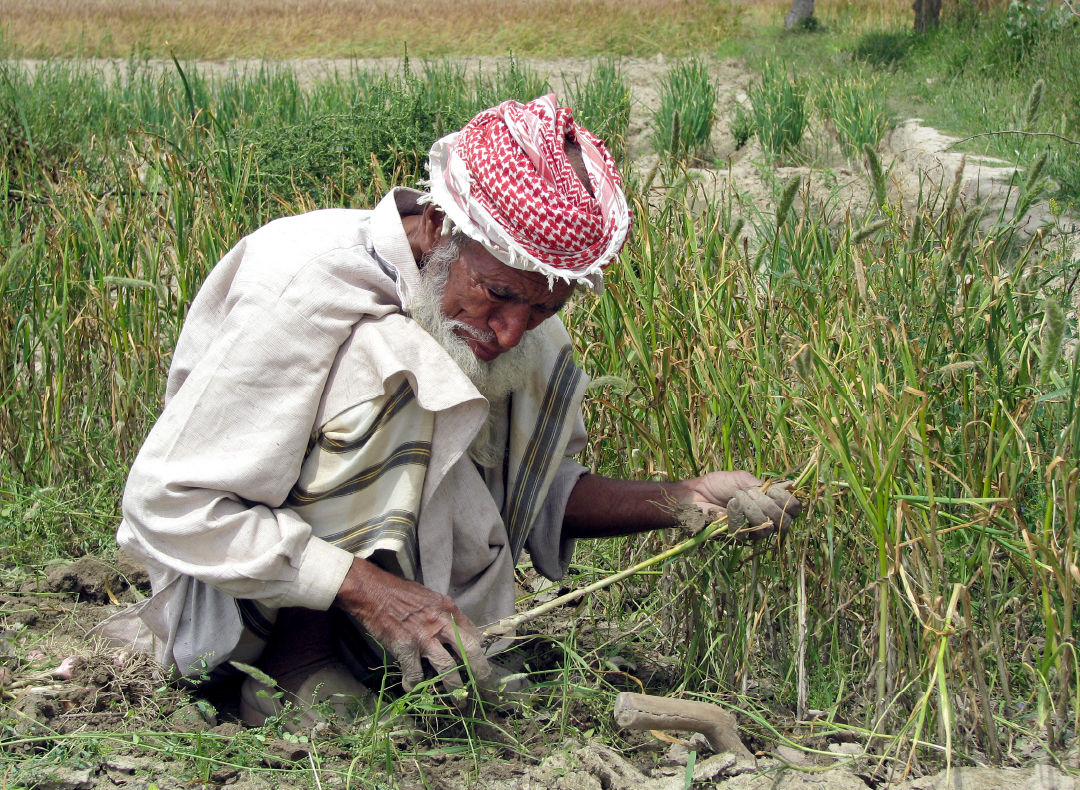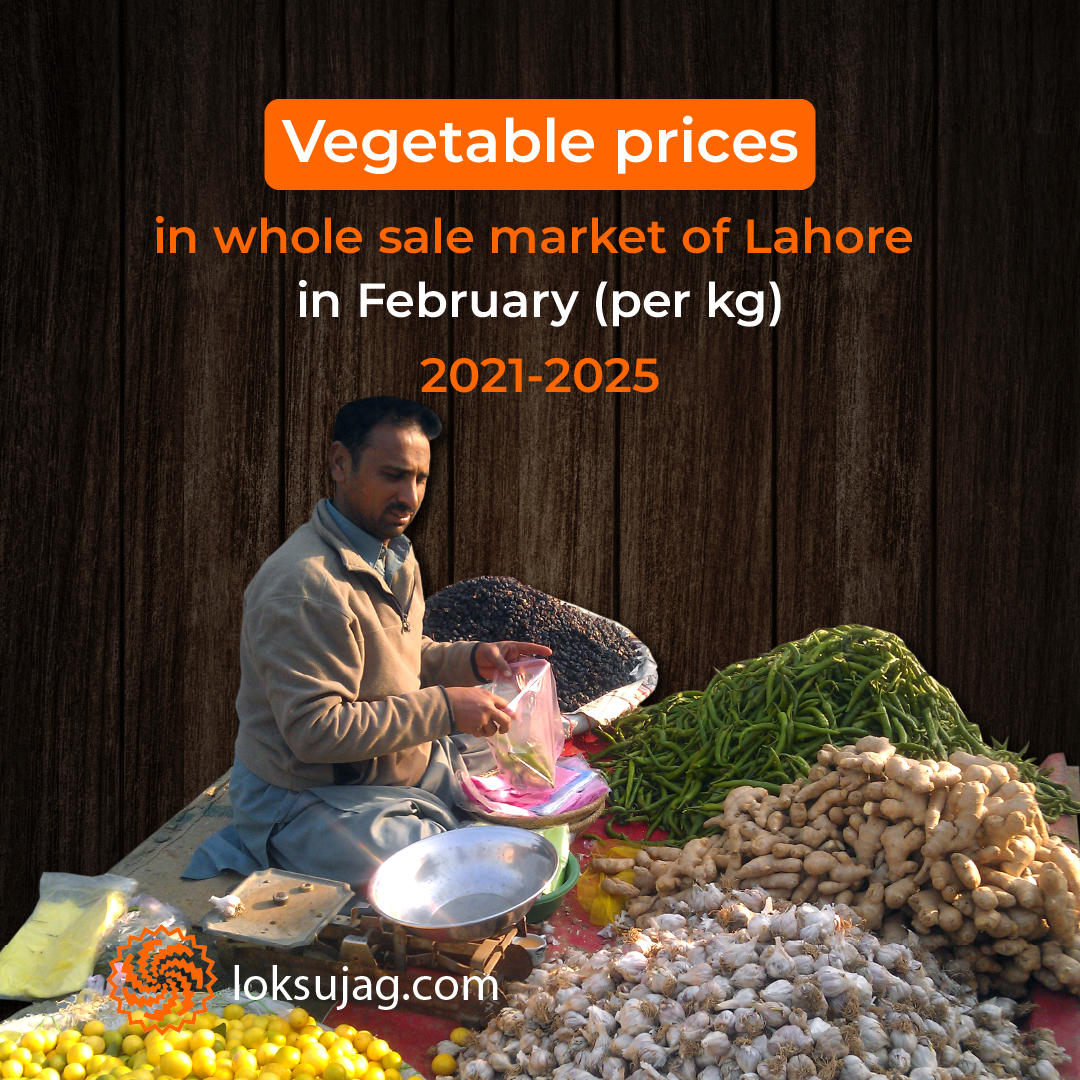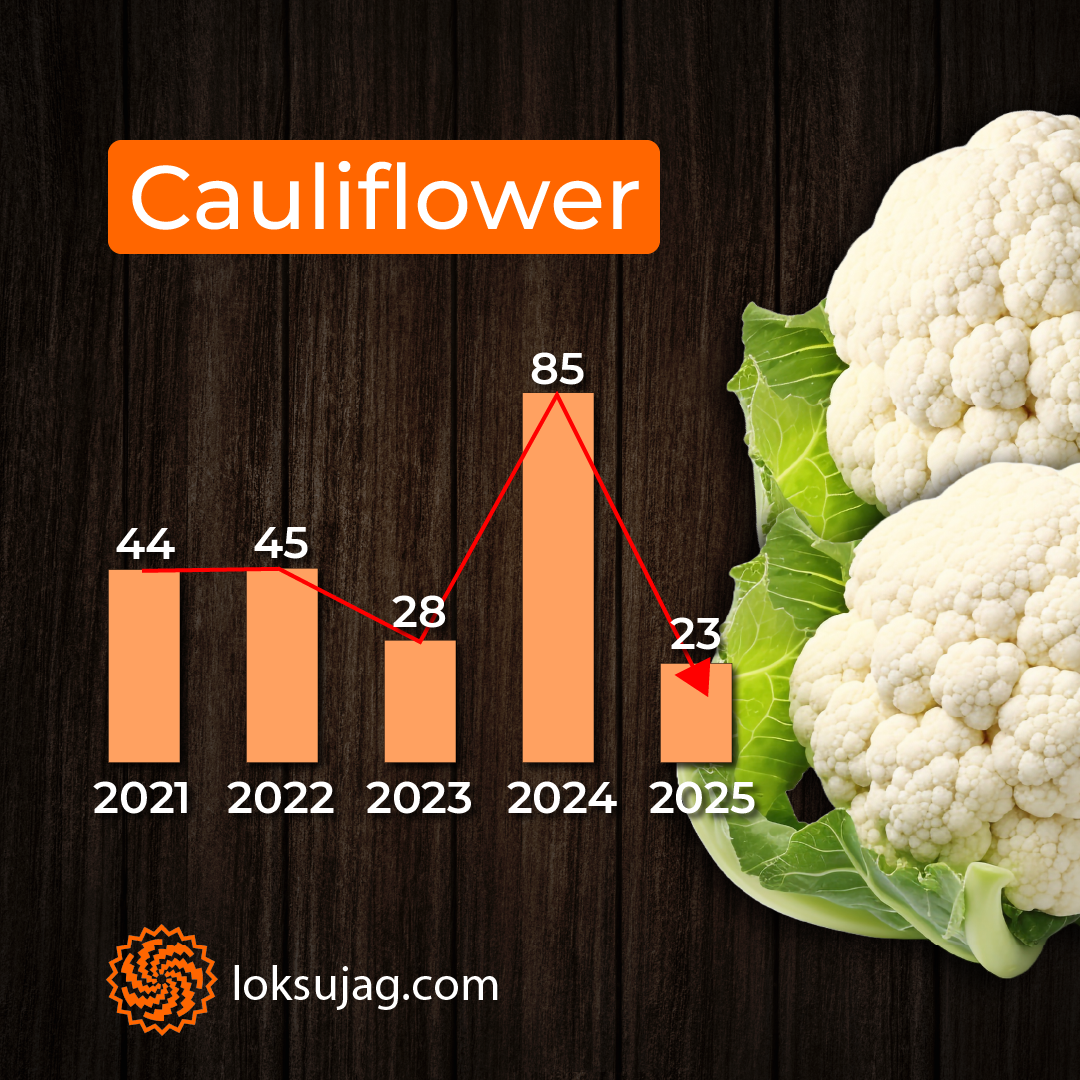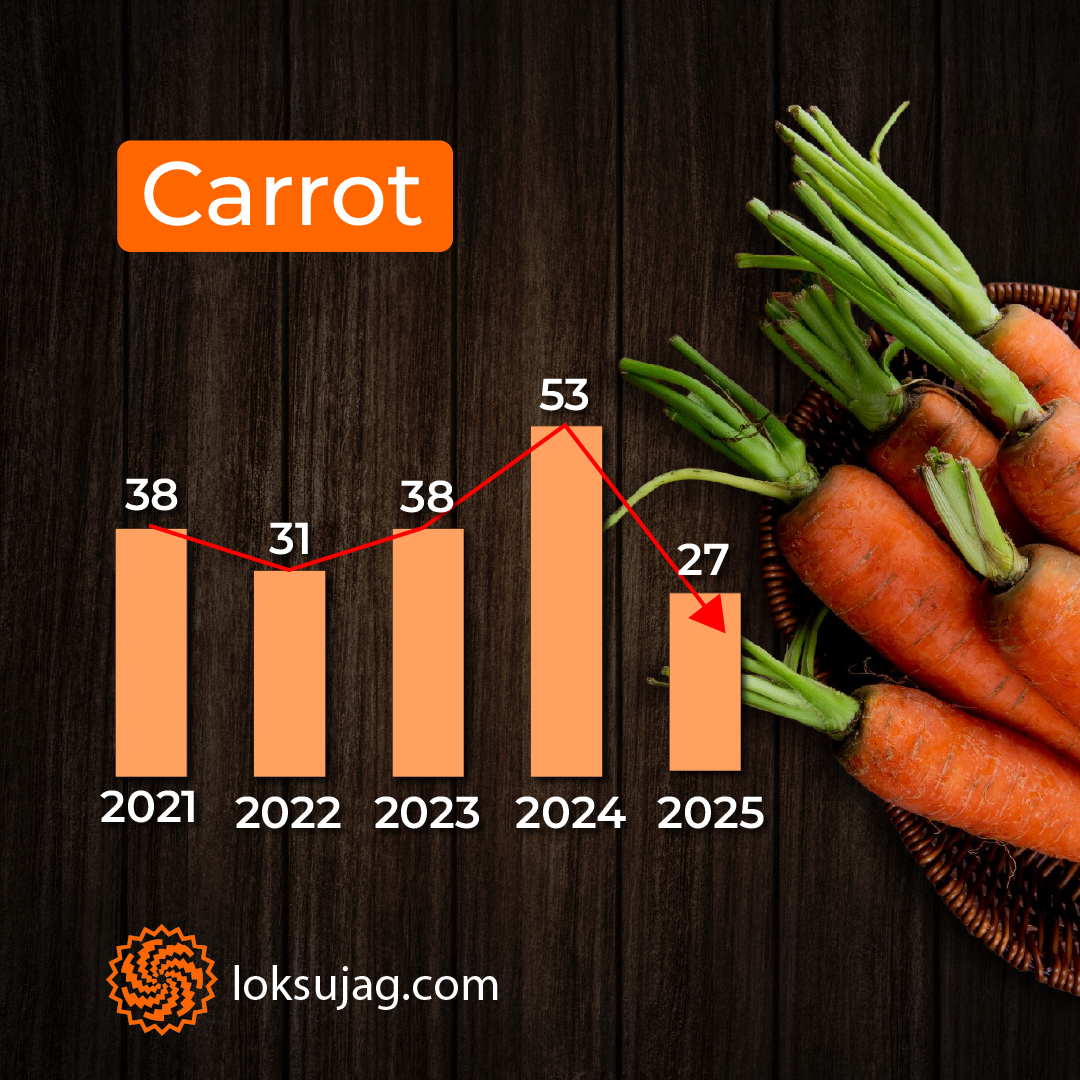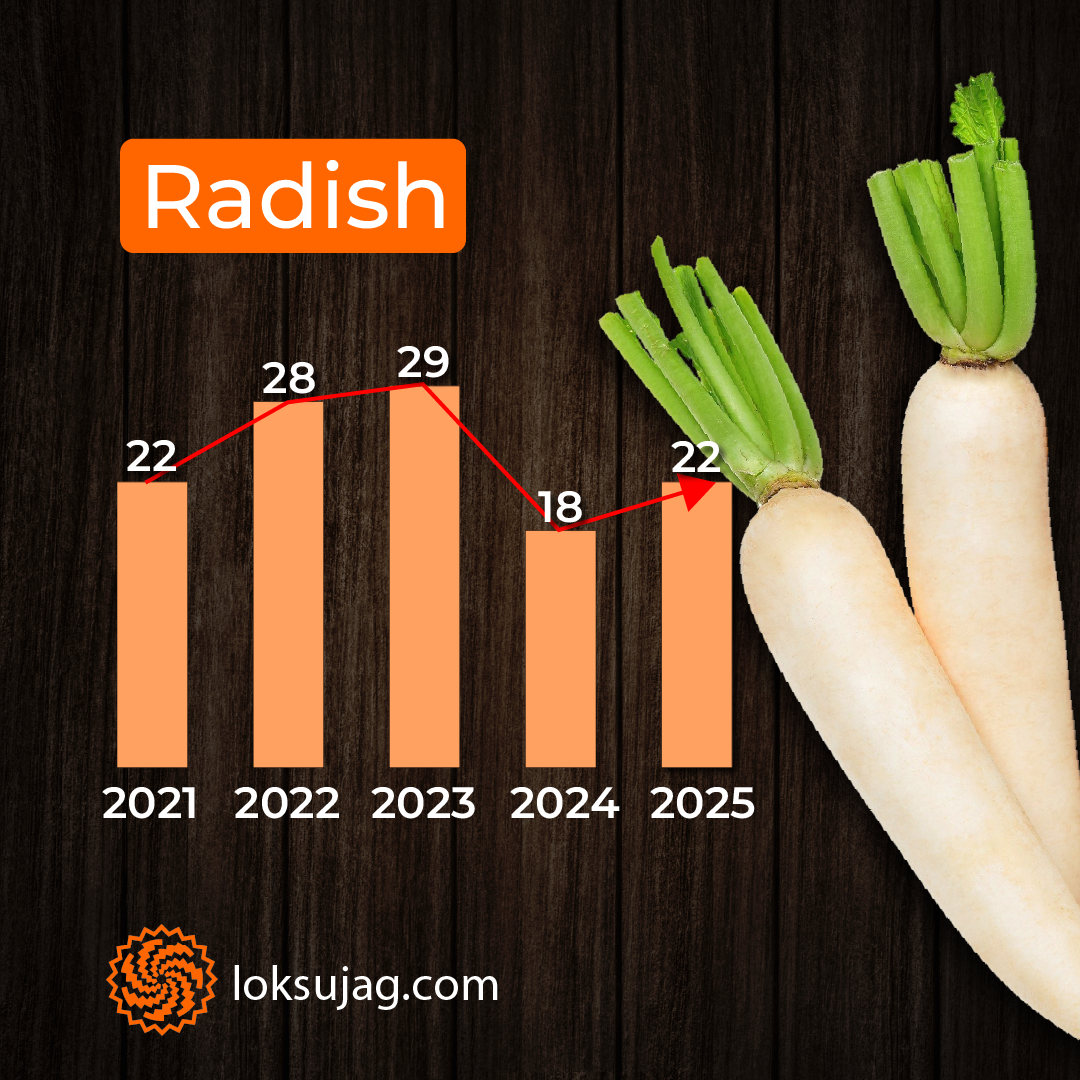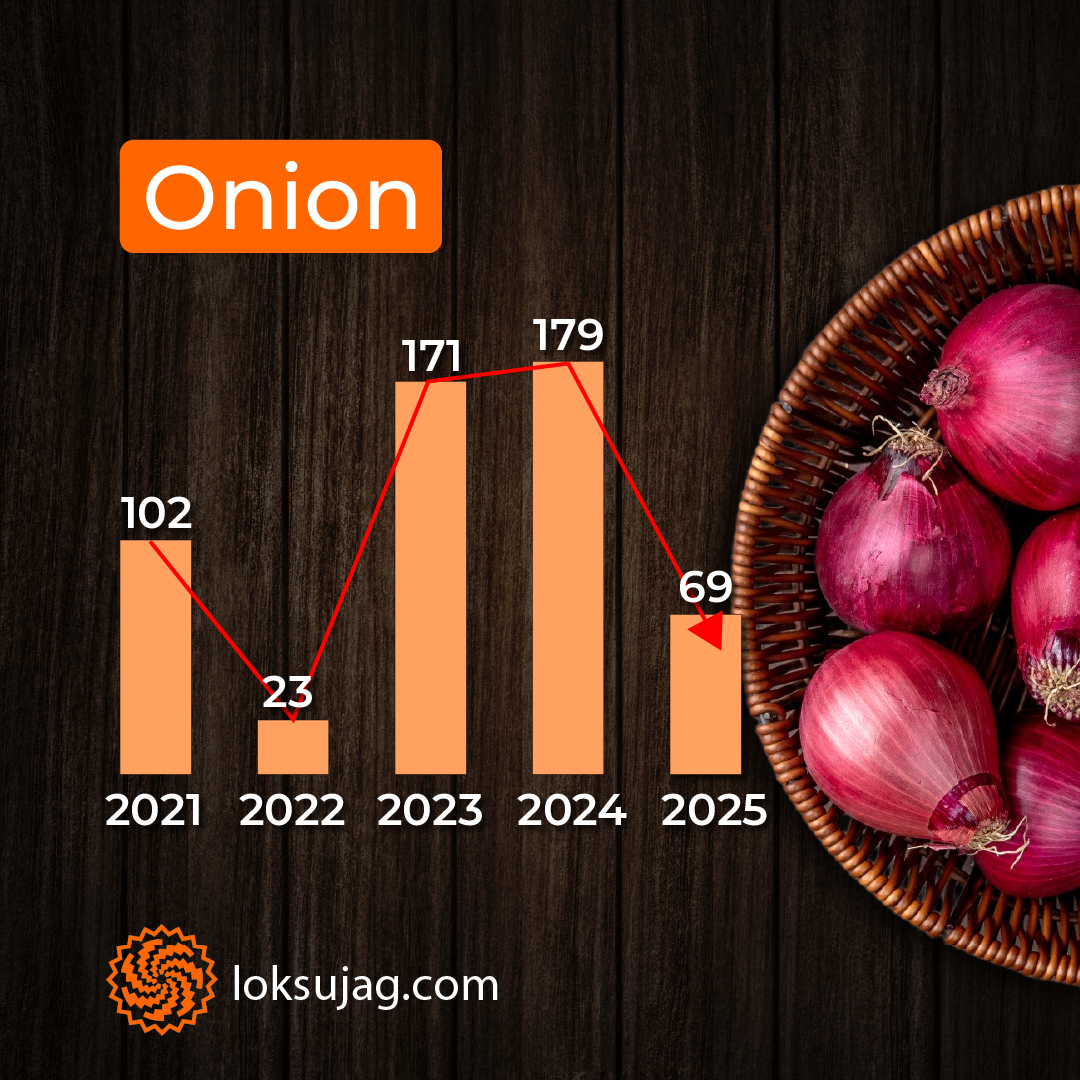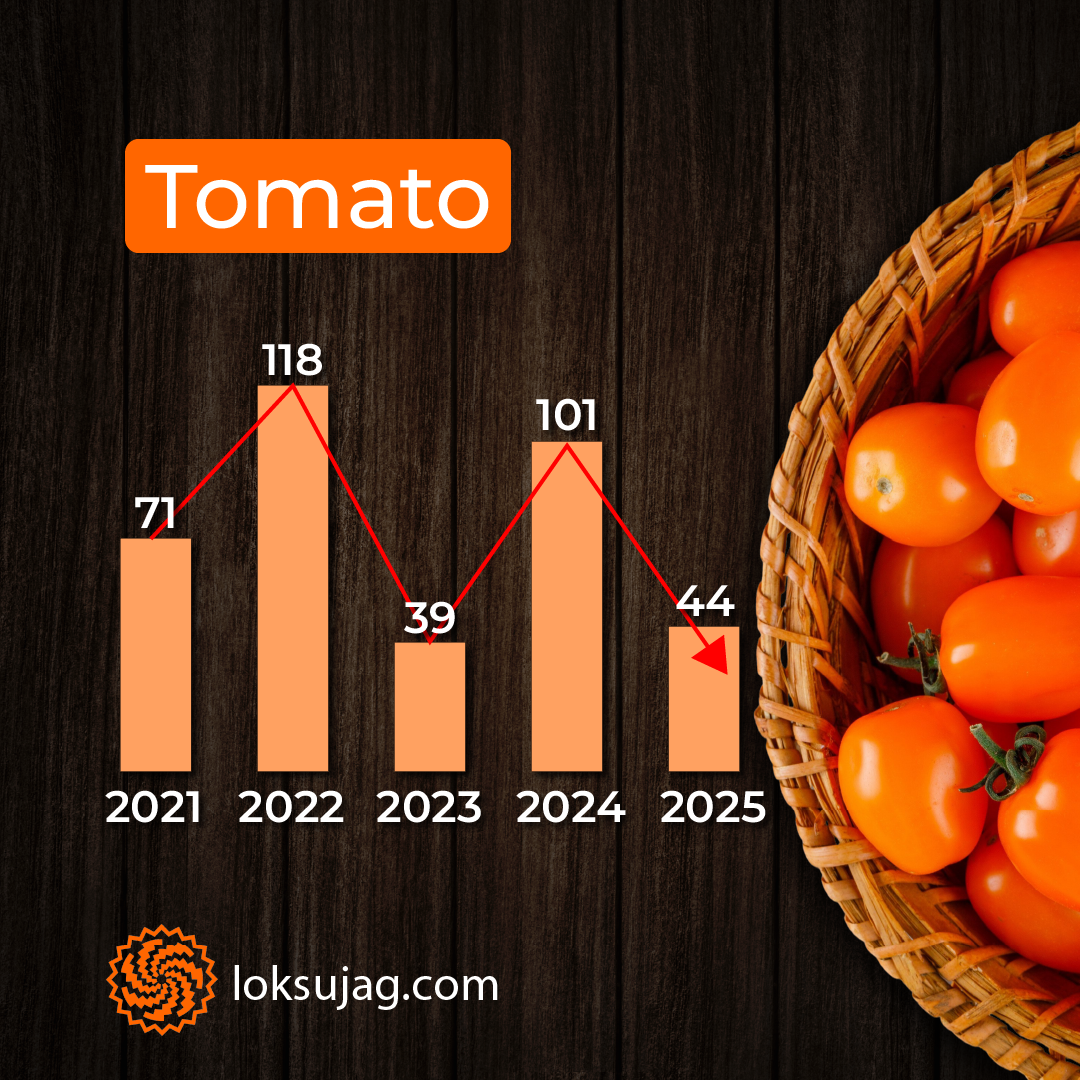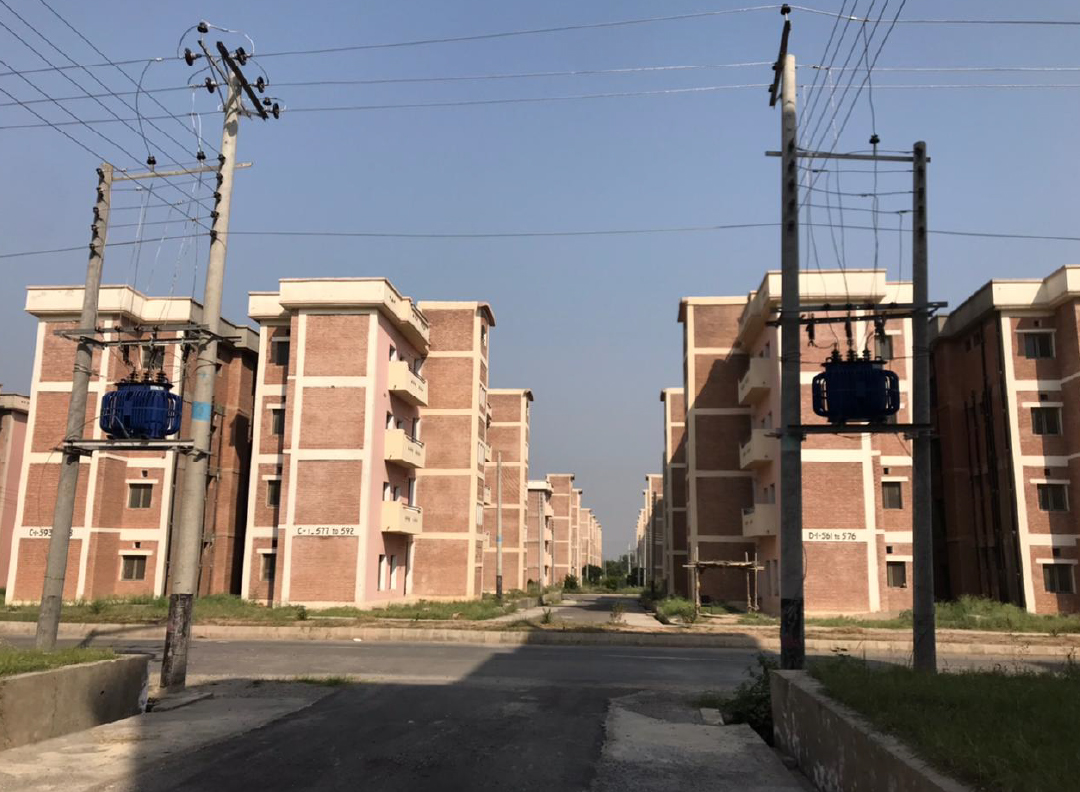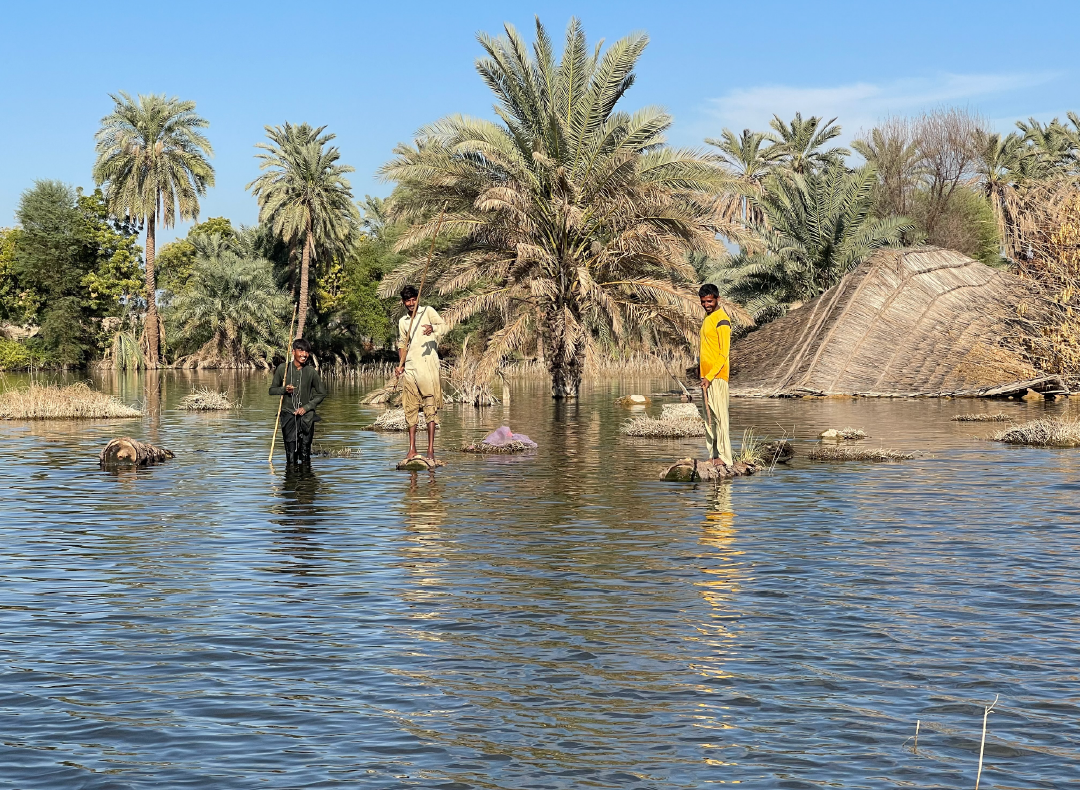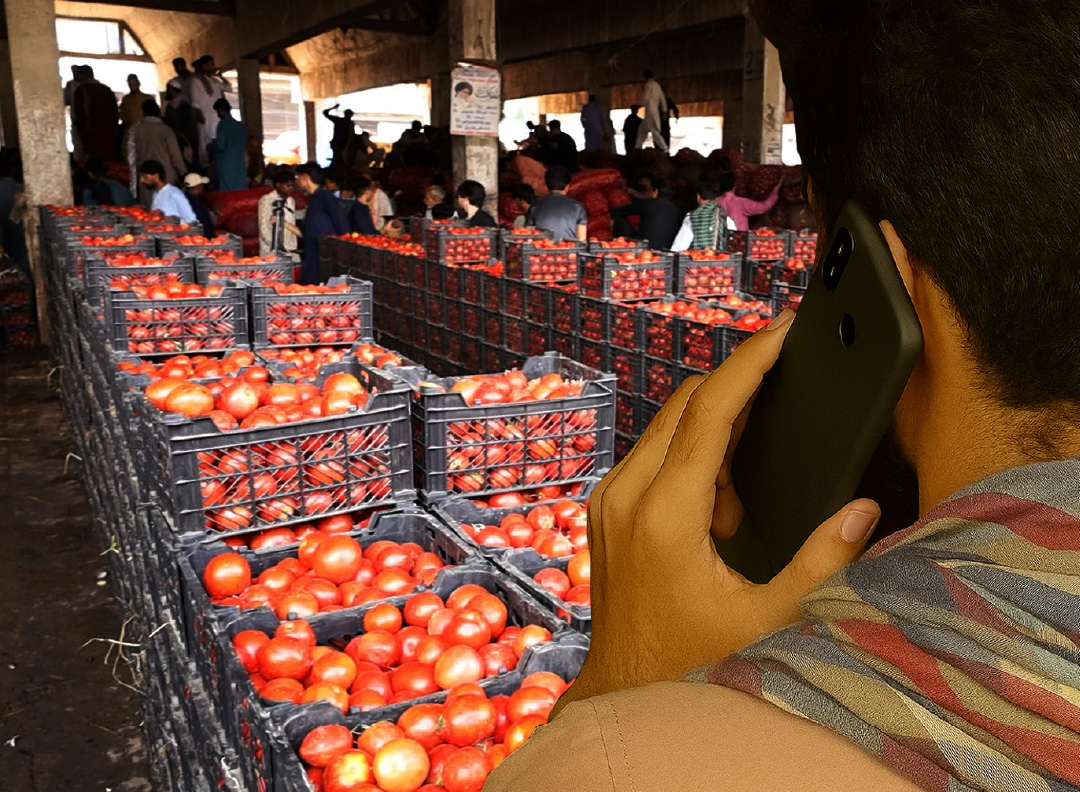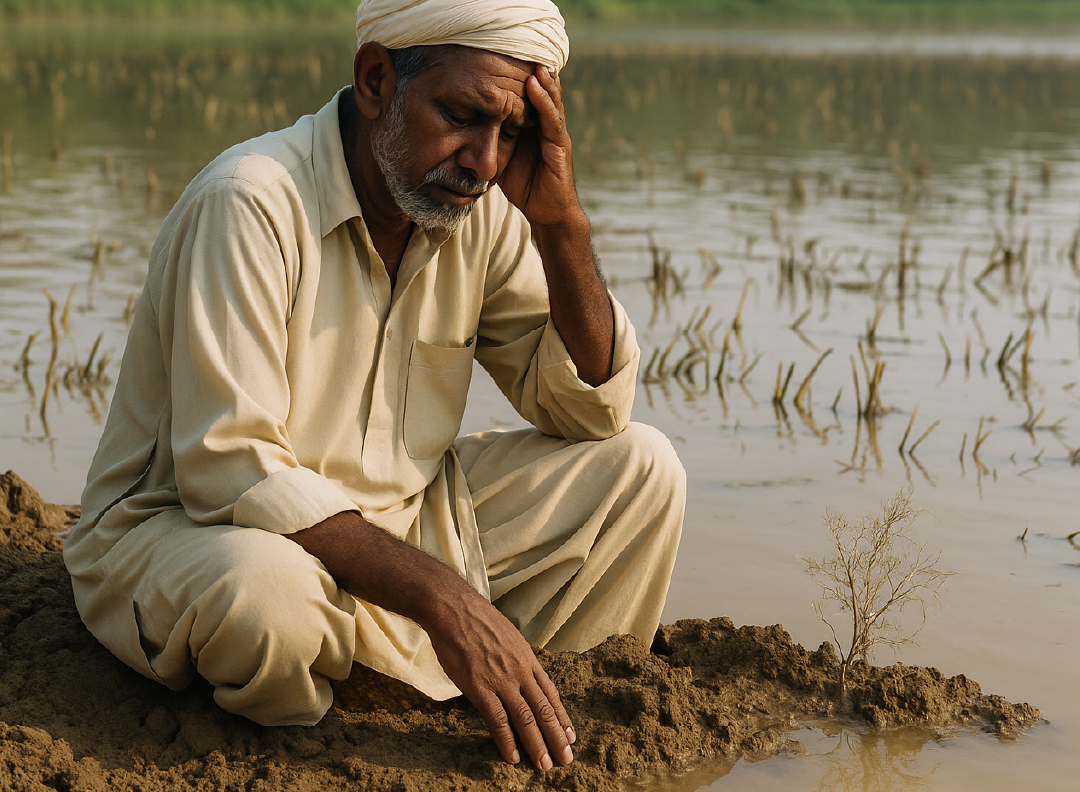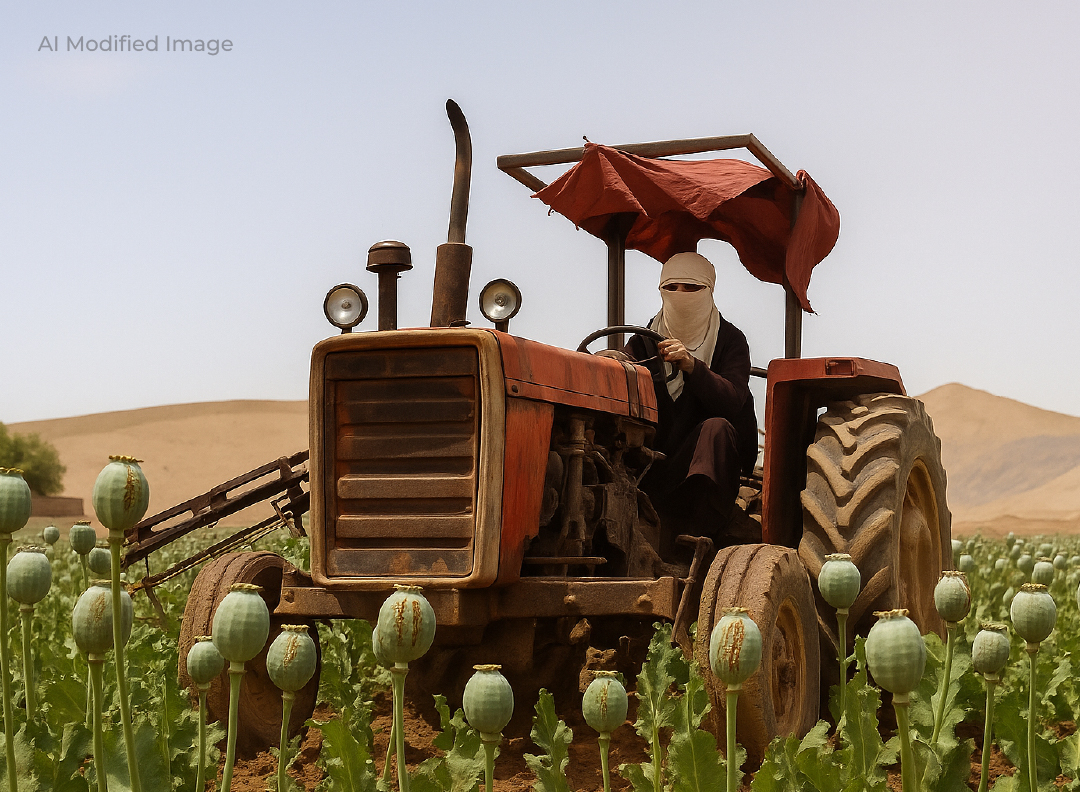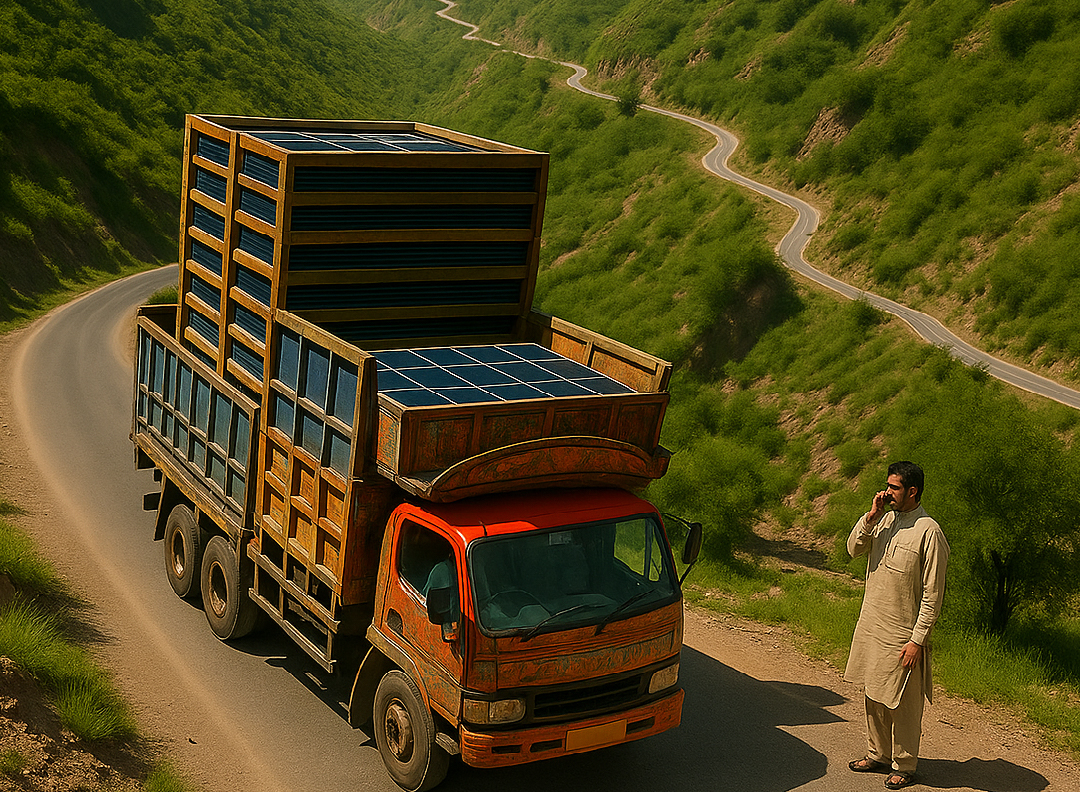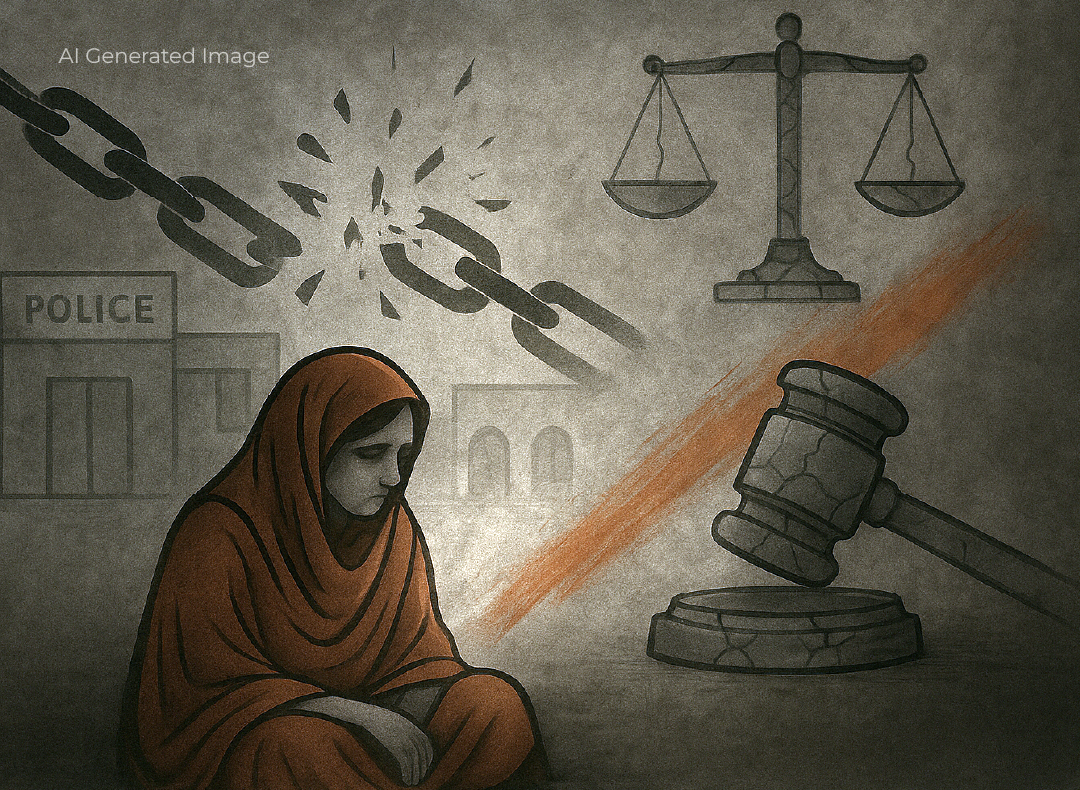Ghulam Qadir Virk from Gopi Rai village in Sheikhupura relies on his 10 acre land for livelihood. Last year, he suffered losses in his wheat crop. This year, he cut his wheat cultivation and turned to planting peas, turnips, radishes, carrots, fenugreek, and cauliflowers on five acres. However, when the vegetables were harvested and he took them to the market, he was left shocked.
“I suffered a loss of Rs250,000 in just cauliflower. I was so disheartened that I ploughed the standing cauliflower crop on one acre. I am trying to sell peas, carrots, etc, but the market for all vegetables is down.”
Ghulam Qadir holds the government responsible for this situation. He says that since the current government came into power, it has crushed the farmers. This year, first, there were huge losses in wheat and now the vegetables are also facing the same fate.
In Vehari district, Chaudhry Umair Ali of Chak 531-EB also replaced wheat with peas on his two acres land and cultivated cauliflowers, onions, carrots, etc., on the remaining two acres. He too is extremely concerned.
“A 40kg sack of peas is selling for a maximum of Rs1,200 in the market, which is even less than the cost incurred on cultivation,” he laments.
The Crop Reporting Service section of the Punjab Agriculture Department, confirms that last year, a farmer spent Rs1,942 on cultivating and transporting per 40kg peas to market. If this estimate is correct, Chaudhry Umair is facing a loss of Rs720 per 40kg and Rs60,000 per acre on average.
Lowest prices in last five years
Despite the risk of crop spoilage, Umair Ali delayed harvesting some vegetables, hoping for an increase in prices during Ramazan but in vain.
Thousands of vegetable farmers across the country are facing the same crisis, suffering losses despite investing their time, effort and money.
In Sahiwal district, Muhammad Amin, a commission agent at Chichawatni vegetable market, says that the farmers are bringing vegetables on tractor-trolleys like sugarcane for the first time in the last 20 years and bidding is taking place on the entire trolleys.
“I have never seen such low prices of vegetables. The rates of peas, cauliflower, carrots, and radishes have fallen so much that farmers are either destroying their standing crops or telling people to take vegetables for free.”
Falak Sher, a trader at the fruit and vegetable market of Lahore, says that every year, when Punjab’s vegetable supply starts, prices naturally decrease a bit; however, this time, the crisis is so severe that people are buying vegetables as fodder for their livestock.
An analysis of the wholesale market in the provincial capital reveals that vegetable prices have touched their lowest level in the last five years.
Falak Sher says that this situation is also causing losses to commission agents who make advance payments to farmers for cultivating vegetables. Farmers return these loans when the crop is harvested.” Since the farmers are not even recovering the cost of harvesting and transporting crops to the market, how will they repay the commission agents?” he wonders.

Supply and demand factor
According to Falak Sher, it’s all about supply and demand. Last year, the farmers who suffered losses in wheat switched to vegetables, leading to their surplus production and flooding of the market.
Aamir Latif, senior scientist at the Ayub Agriculture Institute, Faisalabad, a government research institute, agrees that surplus supply has caused vegetable prices to drop.
“Last year, farmers didn’t get a fair price for wheat so this year, they opted for alternative crops, with vegetables being their top choice.”
The Punjab Agriculture Department statistics confirm that wheat cultivation this year is 1.19 million acres less than the last year. Chickpeas and fodder crop areas also witnessed a decline in the Rabi season.
On the other hand, vegetable cultivation significantly increased. The area under peas increased by 118,000 acres (64pc), the area under potato cultivation went up by 118,000 acres (15pc), while onion cultivation expanded by 10,800 acres (15pc).
According to the officials of the Crop Reporting Service, the estimates for the cultivated area of tomatoes, garlic, cauliflowers, carrots, radishes, and other vegetables are still being finalised, but it is evident that their cultivation also increased significantly.
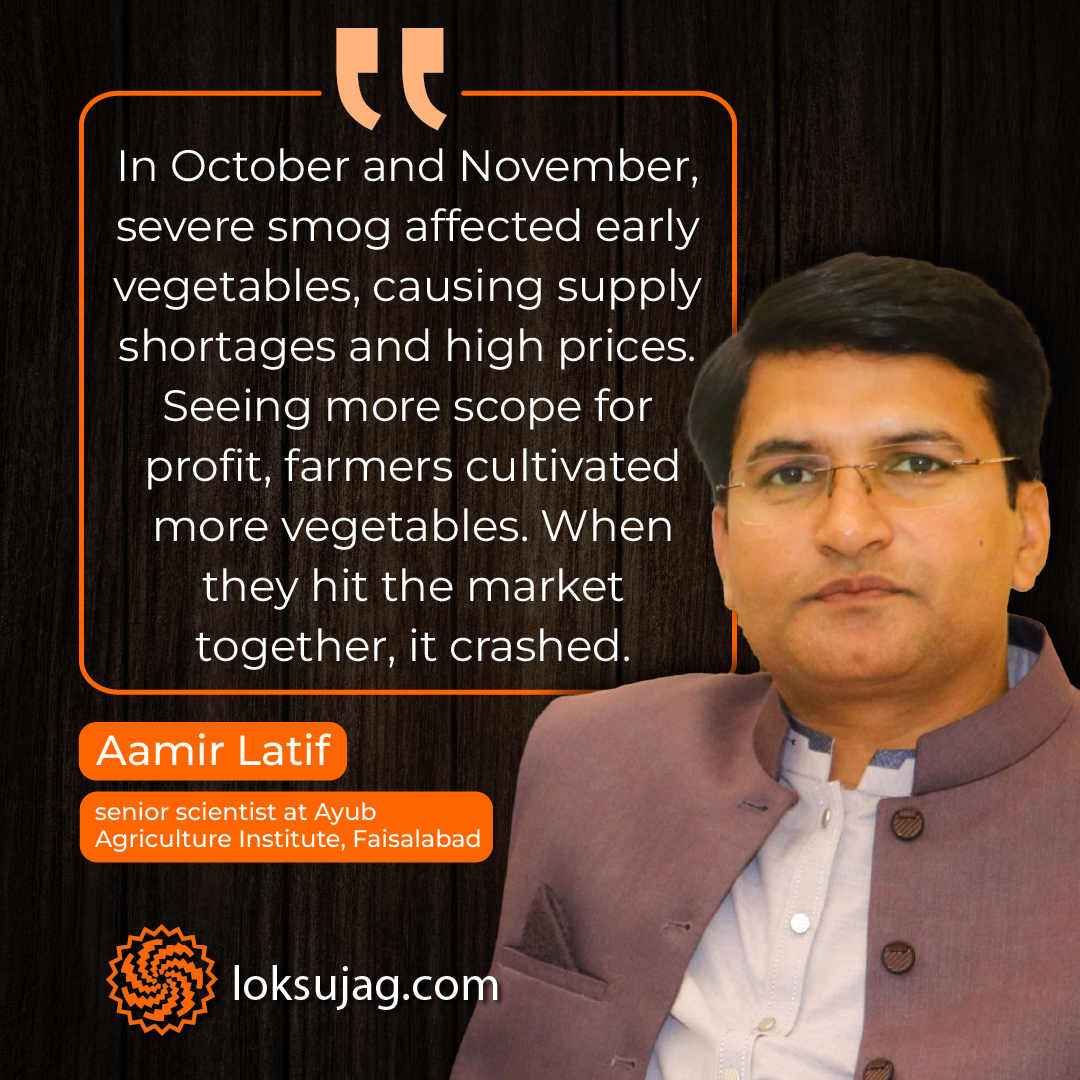
The issue is not overproduction but system
According to Aamir Latif, in October and November, severe smog affected vegetables that were cultivated early, causing supply shortages and skyrocketing prices. Seeing these high prices, farmers cultivated more vegetables, and when they all hit the market simultaneously, it crashed.
Kashif Islam, a progressive farmer and vegetable exporter from Lodhran, does not agree with Aamir Latif and Falak Sher. He believes that overproduction or excessive cultivation is not the issue but the flawed system.
“We have to rush vegetables to the market because they spoil in case of a delay. This rush leads to a sudden increase in supply, causing prices to crash. As a result, farmers can’t even recover their cost.”
He argues that the shelf life of vegetables increases if modern processing, storage and cold chain facilities are available.
“In this case, there is no rush to take the vegetables to market, which keeps supply and demand balanced, stabilizes prices and makes exports easier.”
According to him, dehydrated vegetables are common worldwide and can be stored for long periods but Pakistani consumers are not used to them.
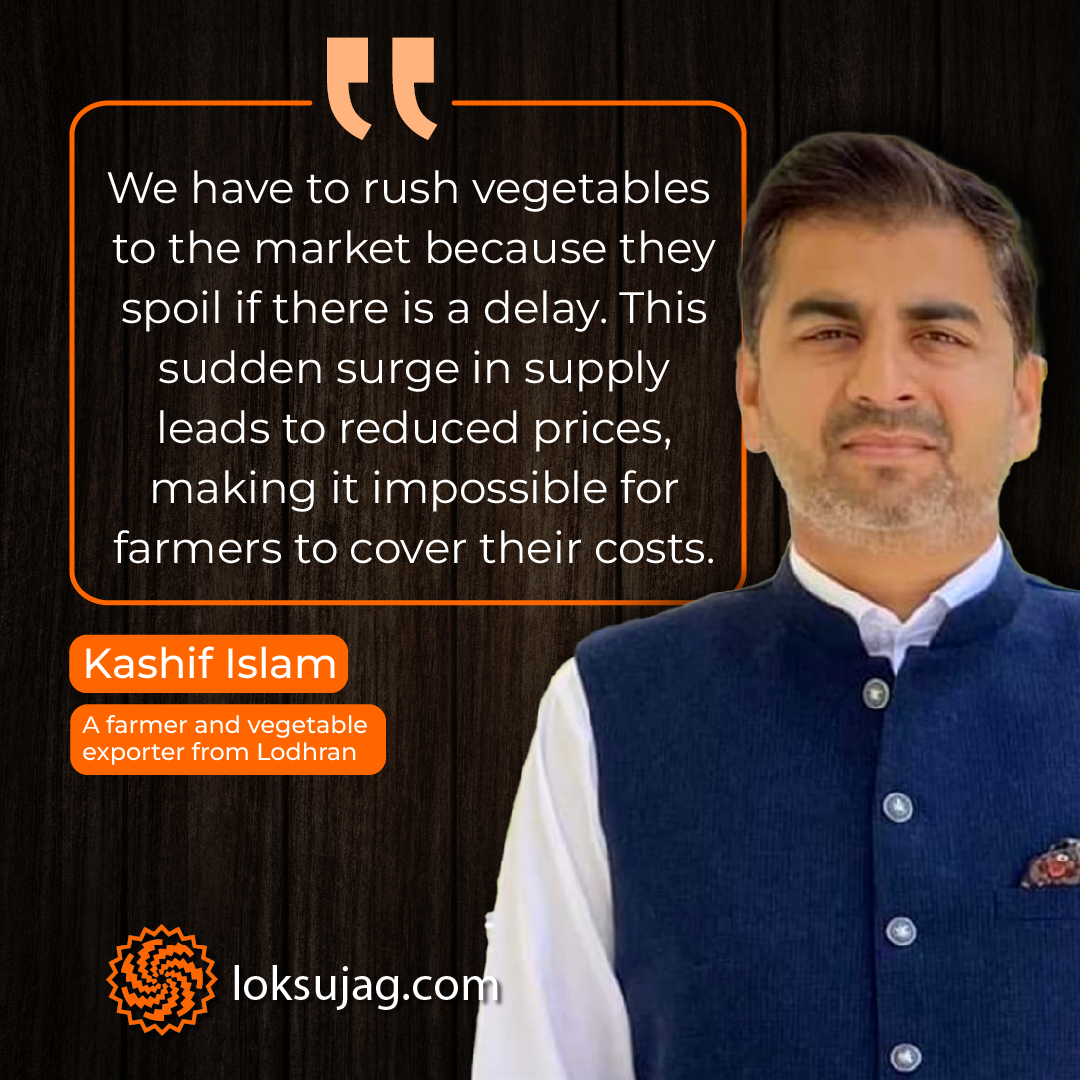
Hurdles to export to global markets
Muhammad Yousaf Gul, a major vegetable exporter from Gujrat, says that despite surplus production, Pakistani vegetables do not reach global markets. During summers, the vegetables, including bitter gourd and okra, are exported to Afghanistan. Winter vegetables are exported in much smaller quantities. In recent years, additional taxes and border restrictions with Afghanistan have further reduced exports.
According to him, some new exporters have gained access to Gulf markets in the past two years, but they mainly export onions, garlic, peas, carrots and turnips, which have a longer shelf life. Cauliflowers, tomatoes, and other vegetables spoil within a week, limiting their exports to Afghanistan only.
Government data shows that during the past five years, all exports of peas and carrots from Pakistan went to the Gulf region while only cauliflower was exported to Afghanistan.
Kashif Islam warns that Afghanistan has now started cultivating vegetables, and Pakistan may lose this market also soon. Export to Europe requires strict certifications, which are not feasible for every farmer or small exporter.
“We need to guide our farmers. After forming district-level farmer cartels, they should be provided with modern machinery and training for producing and packaging vegetables according to global standards. Only then can we establish a strong foothold in the international market,” suggests Islam.
Published on 8 Mar 2025
